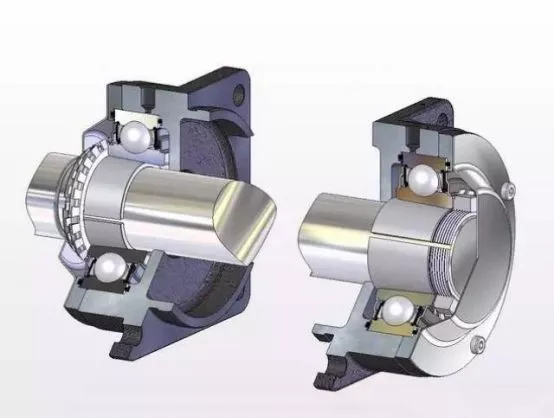Whether the bearings are installed correctly is related to the service life of the bearings, so everyone must pay attention to it. Below are five steps for correctly installing bearings, hoping to be helpful to you who are currently using bearings.
Use specialized tools for bearing installation and disassembly. Advanced installation tools can avoid bearing damage caused by improper tool and operation during installation. For example, when installing bearings, workers have used the copper rod tapping method, which can easily cause uneven axial force on the bearing, resulting in deformation of the cage, damage to the rolling elements, increased clearance, and copper powder flying into the bearing cage during the tapping process, which can easily cause bearing failure.
Check the bearings before installation. For old bearings, it is necessary to check whether there are burrs, scratches, and cracks on the surface of the ball (column). Whether the radial clearance and axial clearance of old bearings are qualified, usually only the radial clearance is measured. For new bearings, the first thing to check is whether the bearing model is correct. The radial clearance standard for rolling bearings refers to Table 1. For example, the 6318 deep groove ball bearing has an inner diameter of 90mm and a radial clearance range of 0.016-0.046mm. The maximum wear of the bearing can also be found to be 0.25mm.

Check the fit size between the bearing and the rotor shaft. When assembling the motor, it is also necessary to carefully check the fitting dimensions between the bearing and the rotor shaft during bearing installation (Table 2), as well as the fitting dimensions between the outer ring of the bearing and the end cap hole.
Control the amount of oil in the bearings and bearing chambers. Excessive oil in the bearing and box can cause the rolling elements of the bearing to slip, causing the rolling elements to change from rolling friction to sliding friction, damaging the rolling elements of the bearing. Due to excessive oil in the bearing, the free space inside the bearing box is small, the operating temperature of the bearing will rise, the frequency of the lubricating grease will decrease, the lubricating oil film of the rolling elements will become thinner, the lubrication conditions will be poor, and it is easy to cause bearing noise, surface slippage, and shorten the life of the bearing. Generally, the motor end cover side is equipped with a bearing oil chamber (except for motors designed with double sealed bearings). According to the motor speed, the oil filling amount in the bearing chamber can be executed according to the following standards: when the motor speed is less than 1500r/min, the oil filling amount is 2/3 of the bearing chamber volume. When the speed is between 1500 and 3000 r/min, it is 1/2 of the bearing chamber volume. When the speed is greater than 3000r/min, it should be less than or equal to one-third of the bearing volume. In practical work, for bearings operating at high temperatures and high speeds, it is advisable to minimize the use of bearings with sealing surfaces, increase the oil storage capacity of the motor oil cover, and install fuel injectors to improve the service life of the motor bearings.
Pay attention to ensuring that the insulation is intact. For bearings with insulation design on the outer ring, attention should be paid to ensuring that the insulation is intact. If the bearing insulation is damaged during installation, the thin bearing oil film will be broken down by the shaft voltage. After the oil film is broken down, not only will the lubrication conditions of the rolling elements be poor, but the generated electric sparks will also cause electric corrosion to the rolling elements of the bearing, causing the surface of the rolling elements to become uneven and accelerating the wear of the bearing.